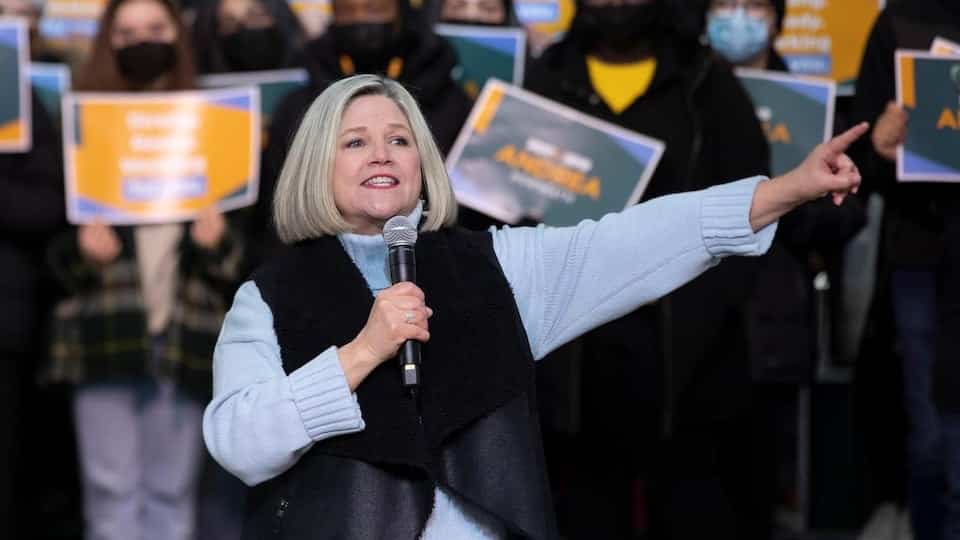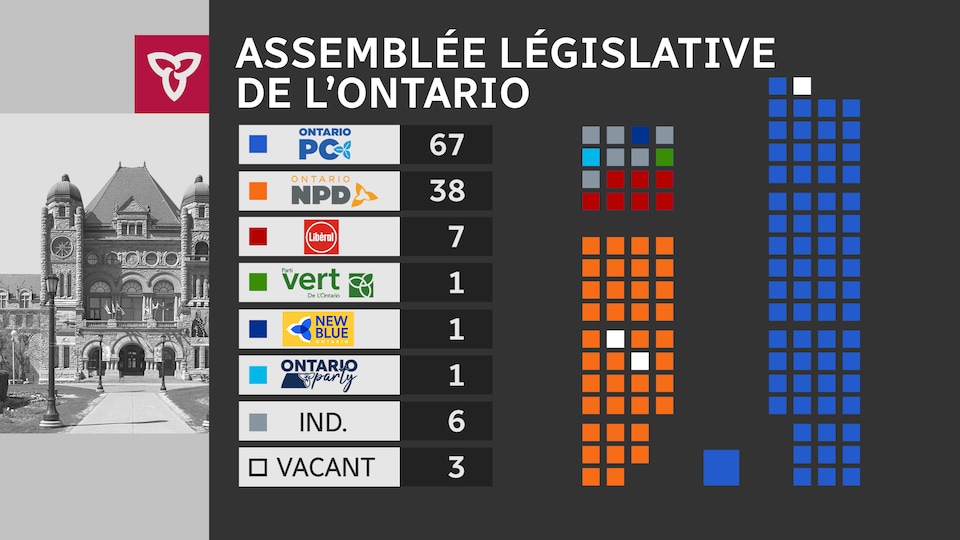The election call follows the dissolution of the Ontario Parliament, requested Tuesday by Doug Ford to the lieutenant-governor. Work was adjourned last Thursday, after the tabling of Doug Ford’s electoral budget.
The budget, which promises $158 billion in capital spending over 10 years, aims to woo voters with measures like gas tax cuts and highway construction.
It was not adopted and will serve as an election platform for Doug Ford.
The Ontario NDP platform, unveiled last week, focuses on health and the cost of living.
For the time being, chef Andrea Horwath has refused to disclose the cost of her program, but she promises to do so during the campaign.
As soon as we get those numbers, you’ll get them, long before people go to the polls
Ms. Horwath said in an announcement on Tuesday.
The platform of Steven Del Duca’s Liberals, who launched his campaign on Sunday in his former riding of Vaughan-Woodbridge, should be unveiled in the coming days, according to the party.
The leader is promising wallet-related measures, like $1 public transit until January 2024.
Mr. Del Duca was defeated in Vaughan-Woodbridge in the 2018 election. His primary goal is to revive the party from its ashes.
Green Leader Mike Schreiner has also made many promises lately, including making highway construction illegal in Ontario’s Greenbelt, where Doug Ford promises to build two controversial highways.
The chamber at the time of its dissolution
When the chamber was dissolved, the Liberals had only 7 seats. 67 seats were held by the Progressive Conservatives. The greens had one and the NDP38.
Two small parties from the social right were also represented in the Legislative Assembly: the Ontario Party and the New Blue Party, respectively by MPs Rick Nicholls and Belinda Karahalios. These MPs were not elected under these banners, but joined them after being kicked out of Doug Ford’s caucus for their opposition to health measures.
Doug Ford ahead in the polls
CBC Poll Aggregator (New window) gives a comfortable lead to Doug Ford at the moment, with 37% of the voting intentions. The Liberals are second at 29% and the NDP, which formed the official opposition at Queen’s Park, comes third with 22%.
According to Éric Grenier, who manages the aggregator of CBCif the election were to be held today, there would be about a one in six chance that the computer failed to form a majority government. The Liberals could more than triple their number of seats, the analyst believes, but they will have to claw back seats won by the NDP in the previous election.
The first half of the election campaign therefore risks being a two-way fight for the anti-Ford vote.
Met last week at their offices, the strategists of the NDP told certain media, including Radio-Canada, that they were safe
that their party will be able to establish itself as the progressive alternative to Doug Ford. They expect the Liberal campaign runs out of steam
after a few days, despite current polls.
Campaign manager Michael Balagus believes the NDP can make additional gains in Toronto, Sault Ste. Marie and Nippissing (Minister Vic Fedeli’s riding), among others.
Doug Ford unveiled his campaign bus to much fanfare on Saturday, which his team called the Yes Express
, a reminder of one of his campaign slogans. The computer position themselves as the party that says yes
and present the NDP as the party of no
.
Contrary to NDPthe computer and the Liberals will not have a media campaign bus. The Ford team had already abandoned this tradition in 2018, but it is a first for the Liberals, who had to repay a debt of 10 million dollars after biting the dust in the last election.
They don’t have the chests as full as usual. But money is never a guarantee of victory.
In 2018, in the hotly contested riding of Sudbury, the Liberals spent $97,000 but came in third; the NDP won by spending four times less.
In Sault Ste. Marie, the tightest race in the Northeast, the Progressive Conservatives edged the New Democrats by just 400 votes but spent $44,000, compared to $14,000 for the NDP.
Leaders’ debates
The first leaders’ debate is scheduled for May 10 in North Bay and is being hosted by the Federation of Northern Ontario Municipalities. The duel must relate to issues that affect the region, where Doug Ford wishes to delight constituencies from Andrea Horwath.
The debate in French, organized by Radio-Canada and TFO, is scheduled for May 17. Four candidates from the main parties are to compete, but their names have not yet been revealed.
Elections Ontario: By the Numbers
- Election scheduled for June 2
- 7000 polling places
- 55,000 people hired by Elections Ontario on Election Day
- 10 days of advance voting (instead of 5 days in 2018)
- 124 constituencies
- 63: minimum number of seats a party must win to win a majority
Reference-ici.radio-canada.ca

